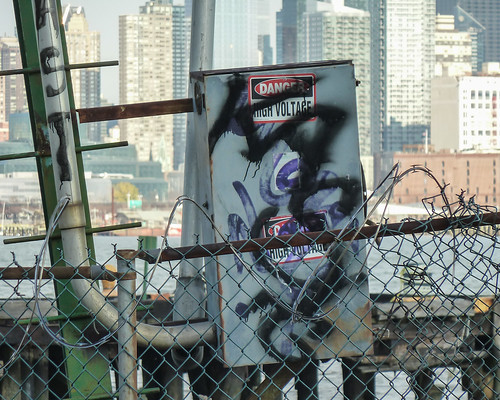I’ve been making a lot of posts over the past year or so about
language, computation, and literary form, with a particular flurry in the last month or two linking Jakobson’s poetic function into the mix. This is going to be another one of those posts. I figure I’ve got to keep going over it until I feel that I’ve got it right, whatever that means.
What I’m NOT saying
I’m not saying that the human mind, or brain, is essentially computational, or digital. Those may or may not be true, but my assertion is more limited.
It limited to language and, within language, to the process whereby word forms are linked to semantic objects and structure (informally, to meaning). Let me emphasize process. It is something the mind does rather than something the mind is – to put it rather sketchily.
Other processes may or may not be fundamentally computational – sensation, perception, movement, pattern recognition, feeling, whatever. Off hand I’d think there’s computation in the sense that word-form-binding is computation, but I also think there are non-computational processes.
Moreover, I’m NOT saying that word-form-binding can be modeled by or usefully thought of as computation. I’m saying that it IS computation. And linguistic form is computational form. Linguistic form guides the binding process.
In what sense computation?
In the sense that we say the earth is a planet that revolves around the sun, and the moon revolves around the earth. Neither of those assertions can be verified by direct perception. Direct perception tells us that the earth is stationary and that both the sun and the moon move over the earth’s surface. Where does the sun go at night? Direct observation doesn’t tell us. Where does the moon go during the day? Direct observation doesn’t tell us.
The heliocentric model of the solar system is an abstract idea. It’s based on a wide range of observations by many observers at many times and places. But not simply observations. Reasoning, physical reasoning and mathematical reasoning.
It’s model subject to revision as needed. Thus Pluto has recently been demoted from planet status, a relatively minor matter of definition. More consequentially, the advent of complexity theory and digital simulation has allowed us to realize that, over the long term, the system is chaotic. The bodies in the system are constantly influencing one another and, consequently, orbits are gradually changing.
Well, that language involves computation is like that, irreducibly so. We don’t understand the system nearly so well. And, to some extent the argument has to be a negative one: What else could it be? As far as I know there simply are no other proposals on the table.
Alan Turing has defined computation in a way that’s independent of any particular physical realization, and THAT’s the kind of thing that can perform the binding task. We know that primarily because we have built artificial system that perform the binding task in limited domains. We have no reason to think that the limitations of those systems can be attributed to computation itself.
Conversation
That, of course, involves the interaction of autonomous agents, which is not something we ordinarily think of in conjunction with computation, which has been characterized as something done by a single agent. I don’t see that as a problem, however. In fact, that may be how computation (in this sense) got started. And through a process perhaps first described by Vygotsky (in his account of language learning) the process that had been distributed across two agents becomes internalized in one.
Also
Anaphoric reference and duality of patterning – but I’m not going to remark on these here and now. I note, however, that duality of patterning pretty much implies the binding problem. And it is, of course, related to indexing as Hays and I discussed it in Principles and development of natural intelligence [1].
Form on a string
Language is manifest as a string of word forms, one after the other. In the case of some but not all written language the word-forms are sharply separated from one another. They are not sharply separated in spoken form nor, I believe, in the gestures of signing. Where the string does not naturally exist in discrete forms the perceptual system must do the job of segmenting; sometimes there are failures.
In a way and somehow I want to say that computation is somehow necessitated by the fact that semantic structures (meaning) are inherently multi-dimensional and cotemporaneous while language takes the material form of one-dimensional strings. It takes computation to go back and forth between these two – not, alas, a very felicitious formulation.
Literary form and description
It is because literature is made of language that literary form is, like linguistic form, computational in nature [2]. Note that the literary string may be subject to quasi-independent sources of ordering (as in verse, where sound may be ordered independently of sense).
I’m thinking – pace
yesterday’s discussion of ring composition – the
routine description of literary form is only possible in the context of the explicit recognition of the computational nature of linguistic and therefore literary form. The ring composition literature seems to me a bit ‘spotty’ and in a way ‘opportunistic’. It’s a bunch of local accommodations and fixes without any overall system. Also, in some forms it is overly reliant on spatial metaphors and references to oral practice, both of which are beside the point (and the spatial metaphors are misleading).
Routinization requires systematic thought and description. In the case of literary form we must explicitly recognize that literary texts ARE strings. It’s not that anyone doesn’t know that, but it’s not something that’s thought about and theorized. And we must recognize that literary form words outside the bounds of conscious thought and deliberation (as, indeed, does linguistic form as well).
Literary form is necessarily about restrictions on the structure of literary strings. That’s what Jakobson’s poetic function is about. It remains to be seen whether the poetic function is absolutely general, providing a ‘complete’ account.
More later.
References





























